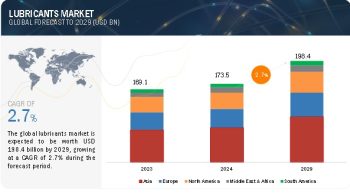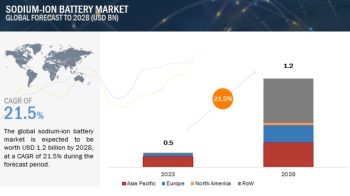Introduction:
The synthetic rope industry is experiencing significant growth, fueled by the advantages of synthetic materials over traditional counterparts. These ropes, made from materials such as polypropylene, nylon, and polyester, have found applications across various sectors, including maritime, construction, sports, and more. In this article, we will delve into the demand for synthetic ropes and their regional analysis.
The global synthetic ropes market is projected to witness a CAGR of 5.9% from 2016 to reach a market size of USD 1.69 Billion by upcoming years. This growth is mainly driven by the high strength and low weight characteristics along with safety features of synthetic ropes.
Download PDF Brochure: https://www.marketsandmarkets.com/pdfdownloadNew.asp?id=50038042
Browse 136 market data Tables and 41 Figures spread through 182 Pages and in-depth TOC on “Synthetic Rope Market by Material Type (Polypropylene, Polyester, Nylon, Polyethylene, Specialty Fibers), End-Use Industry (Marine & Fishing, Oil & Gas, Construction, Cranes, Sports & Leisure, Others), and by Region – Global Forecast.
Synthetic Rope Market Analysis
The market consists of a large number of private players who supply their products to various end-use industries. Cortland Limited (U.S.), WireCo World Group (U.S.), Samson Rope Technologies (U.S.), Marlow Ropes Ltd. (U.K.), and Teufelberger Holdings AG (Austria) are some of the key players in the synthetic ropes market.
Samson Rope Technologies, Cortland, and WireCo World Group were the active players in the global synthetic ropes market in the last five years. Cortland pursued expansions on a large scale, whereas WireCo was more focused on gaining competitive edge through adopting the strategy of mergers & acquisitions. In 2015, Samson expanded its distribution network in Australia, Americas, and Sweden. In the same year, Cortland expanded its new synthetic fiber testing and fabrication facility in Texas that focuses on destructive testing and recertification of synthetic fiber ropes and slings. Samson Rope focused mainly on introducing new products into the market to meet the demands of various end-use industries.
The Growing Demand:
The demand for synthetic ropes has been on the rise due to several key factors:
- Durability and Safety: Synthetic ropes exhibit exceptional durability and resistance to environmental factors, making them ideal for demanding applications. Their inherent buoyancy, flexibility, and non-corrosive properties contribute to enhanced safety in maritime and industrial settings.
- Lightweight: Synthetic ropes are notably lighter than their steel or natural fiber counterparts, reducing the overall weight of equipment and improving efficiency in numerous industries. This characteristic is particularly advantageous in the maritime and construction sectors.
- Cost-Effective: Synthetic ropes often have a lower initial cost compared to traditional materials, and their longer service life and reduced maintenance requirements contribute to cost savings over time.
- Environmental Impact: The eco-conscious trend has driven the adoption of synthetic ropes in various industries. These ropes are environmentally friendly, as they do not release harmful chemicals into the environment, contributing to a cleaner and safer ecosystem.
Speak to Analyst: https://www.marketsandmarkets.com/speaktoanalystNew.asp?id=50038042
Regional Analysis:
Let’s examine the regional demand for synthetic ropes:
- North America:
North America boasts a robust maritime industry, with a high demand for synthetic ropes due to their superior performance and safety features. In addition to maritime, the construction and sports sectors are significant consumers of synthetic ropes. The region’s strict safety regulations and environmental concerns have accelerated the adoption of these eco-friendly materials.
- Europe:
Europe has a diverse demand for synthetic ropes, with a strong emphasis on the maritime and offshore sectors. The North Sea and the Baltic Sea regions witness substantial usage of synthetic ropes for their excellent resistance to saltwater corrosion. Moreover, European construction and sports industries are increasingly turning to synthetic ropes for their durability and cost-effectiveness.
- Asia-Pacific:
The Asia-Pacific region is a thriving hub for the construction and manufacturing sectors, driving the demand for synthetic ropes. China and India, in particular, are witnessing rapid infrastructure development, making synthetic ropes a preferred choice. The maritime industry, particularly in Southeast Asia, is also embracing synthetic ropes for their reliability in challenging sea conditions.
- Latin America:
Latin America’s rich natural resources have led to a growing demand for synthetic ropes in the mining and agriculture sectors. The superior strength and resistance of these ropes make them essential for heavy-duty applications in the region. The maritime and fishing industries in Latin America also rely on synthetic ropes for their operations.
- Middle East and Africa:
The Middle East and Africa region are experiencing an uptick in infrastructure projects, leading to increased adoption of synthetic ropes in construction and heavy-lifting operations. In the maritime sector, these ropes are gaining popularity for their buoyancy and durability, particularly in the offshore oil and gas industry.
Request for New Version: https://www.marketsandmarkets.com/RequestNewVersion.asp?id=50038042
The cranes segment projected to witness the highest CAGR in the synthetic ropes market among all the end-use industries during the forecast period
The market for synthetic ropes in the cranes industry is projected to witness the highest CAGR, in terms of value and volume, between forecast period. The rising development of high performance ropes for lifting mobile cranes is expected to influence the demand for synthetic ropes during the forecast period. Various market leaders are introducing new high performance synthetic ropes for mobile cranes to ease up the operations on the site, which is expected to drive the market growth.
Asia-Pacific projected to witness the highest CAGR between forecast period
The synthetic ropes market in Asia-Pacific possesses immense potential of growth during the forecast period. Rising marine offshore mooring systems, growing construction industry, and the unexplored offshore oil & gas fields in the region are expected to drive the market in this region. High aquaculture production or fishing activities in the region are also expected to trigger the market growth in the region between forecast period. China, Japan, and South Korea are some of the key countries in the region contributing to the market growth.
Conclusion:
The synthetic rope industry is on an upward trajectory, driven by its durability, safety, cost-effectiveness, and environmental benefits. As regional demands continue to grow, the industry’s future appears promising. Whether on the high seas, atop construction sites, or within sports arenas, synthetic ropes have established themselves as reliable, eco-friendly alternatives to traditional materials, and their adoption is set to continue evolving in the years to come.


